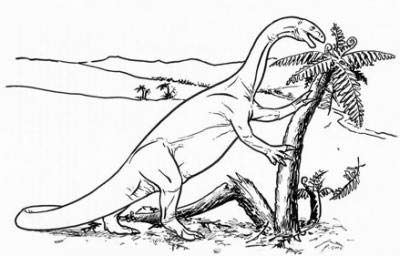Norway's First Dinosaur Sets Depth Record

To claim the country's first dinosaur discovery, Norwegians had to dig more than a mile down.
An oil drilling operation uncovered the knucklebone of a Plateosaurus. Well, actually, the knucklebone is now crushed. And it's not actually in Norway proper, but below the North Sea.
Whatever the case, it's a neat piece of record-setting, accidental paleontology.
The fossil is the deepest dinosaur remain ever found. The knucklebone was found in a hollow grave within sediment 1.4 miles (2,256 meters) below the seabed. The area was once dry plains with rivers running through them.
Researchers said it's quite possible there are many more fossils down there.
Plateosaurus ranged up to 30 feet (9 meters long) and weighed up to 4 tons. It lived in Europe and on Greenland 210 to 195 million years ago, at the end of the Triassic Period.
The finding was announced today by the Research Council of Norway. The work was led by Jorn Hurum, said to be Norway's only dinosaur researcher.
Get the world’s most fascinating discoveries delivered straight to your inbox.
- Dinosaurs that Learned to Fly
- The Biggest Carnivore: Dinosaur History Rewritten
- A Brief History of Dinosaurs
- Dinosaur Fossil Gallery
Robert is an independent health and science journalist and writer based in Phoenix, Arizona. He is a former editor-in-chief of Live Science with over 20 years of experience as a reporter and editor. He has worked on websites such as Space.com and Tom's Guide, and is a contributor on Medium, covering how we age and how to optimize the mind and body through time. He has a journalism degree from Humboldt State University in California.



